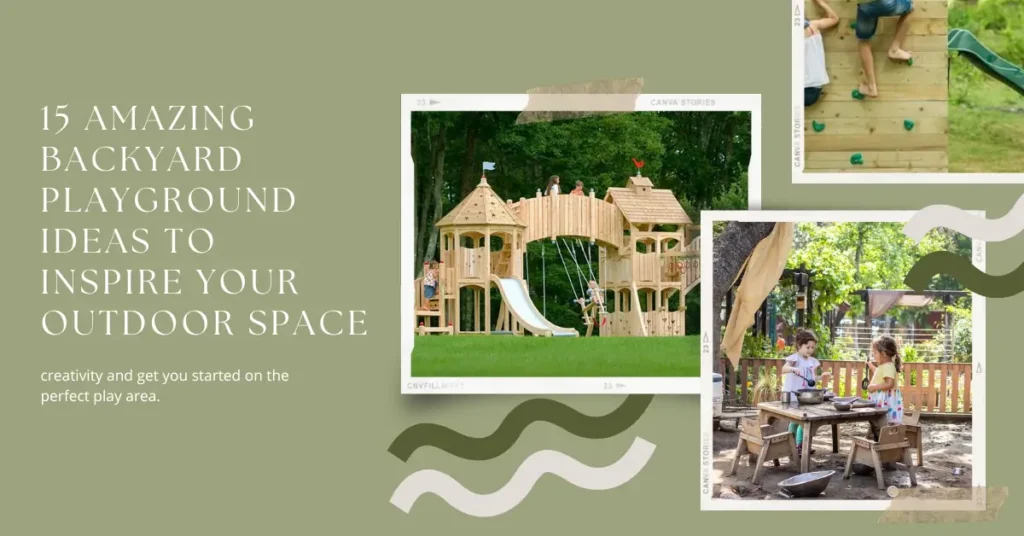Creating a fun and engaging backyard playground can be challenging. You want it to be safe, functional, and, most importantly, exciting for children. But where do you start? How do you design a space that will keep kids entertained while fitting your backyard’s aesthetics?
Don’t worry. We’ve covered you with 15 fantastic backyard playground ideas to transform your outdoor space into a haven for fun and adventure. Whether you have a small yard or plenty of space, these ideas will spark your creativity and get you started on the perfect play area.
Keep reading to discover fantastic ideas for your backyard playground. These suggestions inspire you to create an outdoor space your kids will love and enjoy for years.
What are the best backyard playground ideas for yards of different sizes?
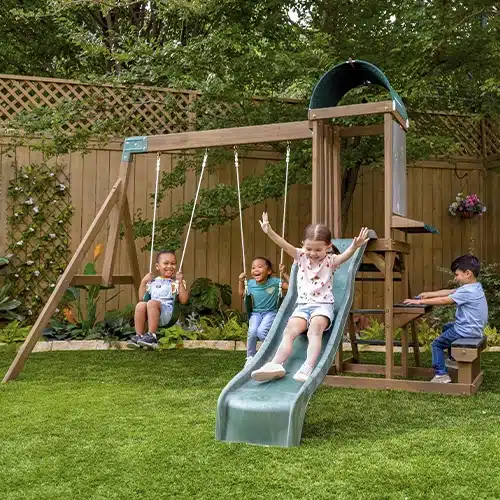
Swing Set: A classic addition to any backyard. Swing sets can be customized with multiple swings, slides, and climbing features. They provide an excellent way for kids to develop balance and coordination while having fun.
Sandbox: Perfect for smaller yards, sandboxes provide endless hours of creative play. Kids can dig, build, and create various structures with suitable toys. They can also be easily covered when not in use to keep the sand clean.

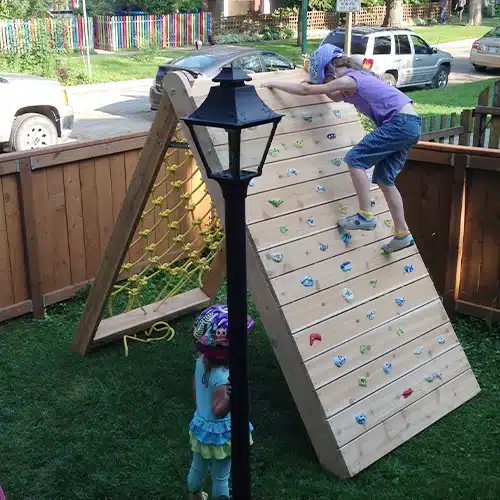
Climbing Wall: Install a mini climbing wall for a challenging and fun activity that builds strength and coordination. Climbing walls can be tailored to fit available space and skill levels, making them a versatile option for backyard playgrounds.
Treehouse: For those with more giant trees, a treehouse can become a magical hideaway for kids. It offers a perfect spot for imaginative play and can be designed to include various features like ladders, slides, and even a zip line.
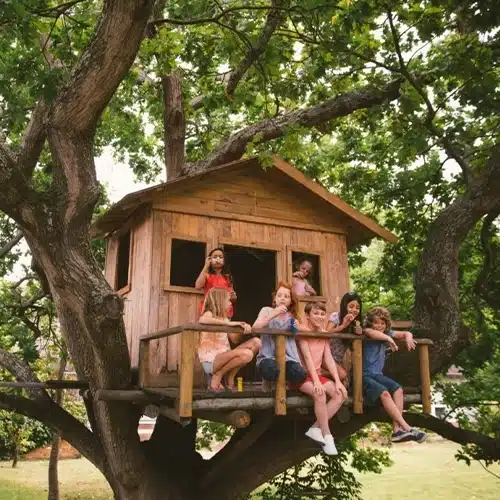
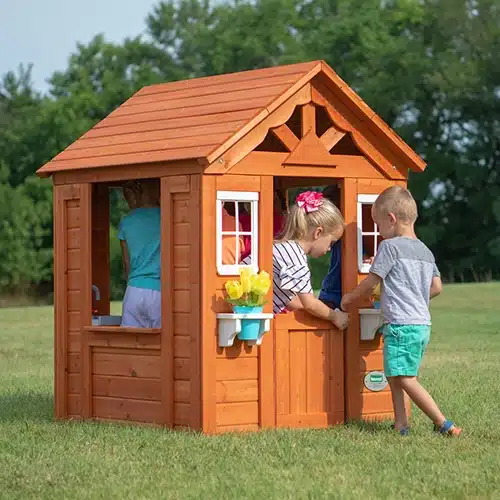
Outdoor Playhouse: A playhouse can spark imaginative play and be a cozy spot for kids to read or relax. It can be styled to match your home or garden, creating a charming and inviting space.
Trampoline: A trampoline can provide hours of bouncing fun and is great for exercise. Ensure it has safety nets and padding to prevent injuries. Trampolines come in various sizes, making it possible to find one that fits your backyard perfectly.
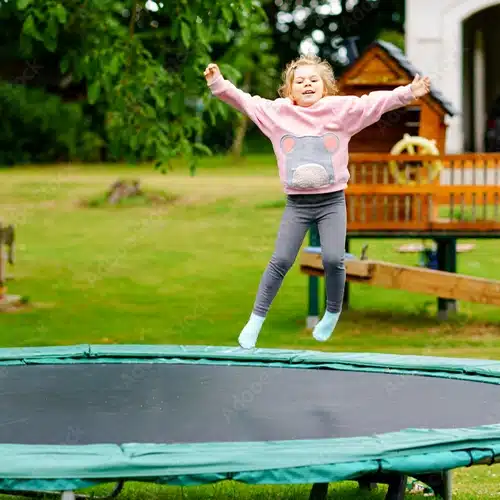
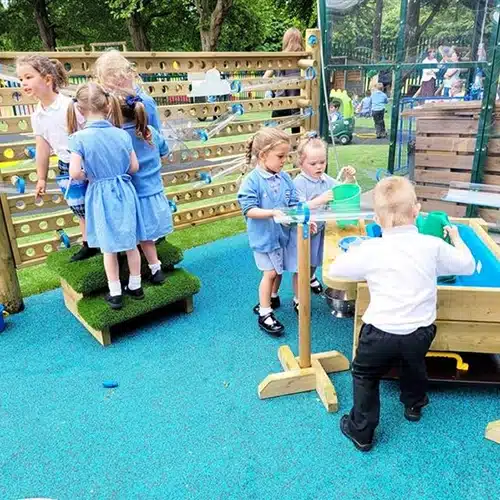
Water Play Area: Integrate a splash pad or small pool for cooling off during hot days. Water play areas can be designed safely, including water jets, slides, and shallow pools.
Obstacle Course: Create an obstacle course with tires, ropes, and balance beams to engage kids. This can be a dynamic and evolving part of your backyard playground, providing new challenges as children grow.
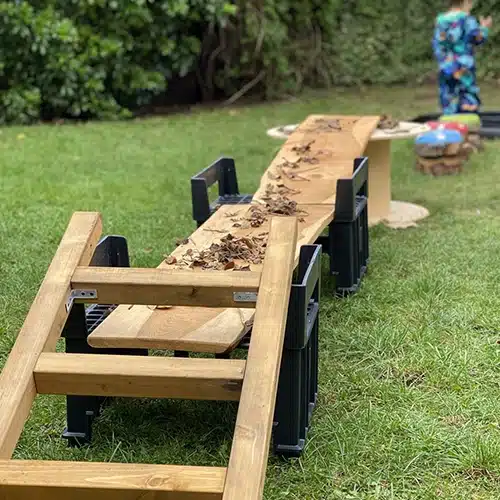
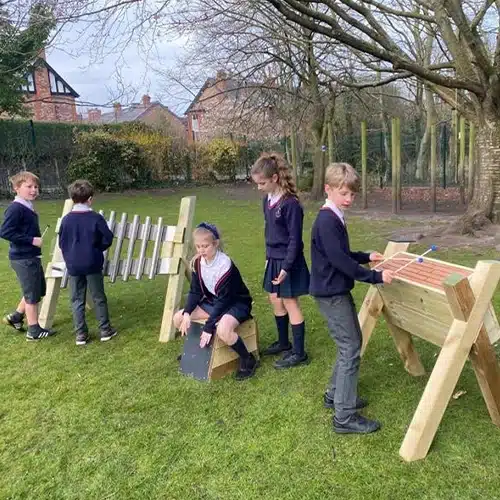
Musical Instruments: Install outdoor musical instruments like drums and xylophones for a creative and sensory experience. These instruments can help develop children’s musical abilities and provide a unique form of entertainment.
Zip Line: If space allows, a zip line can be an exciting feature that brings adventure to your backyard. Ensure proper installation and safety measures to make this a thrilling yet secure addition.
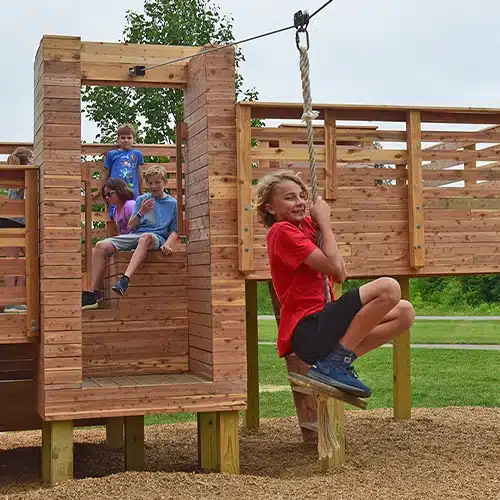
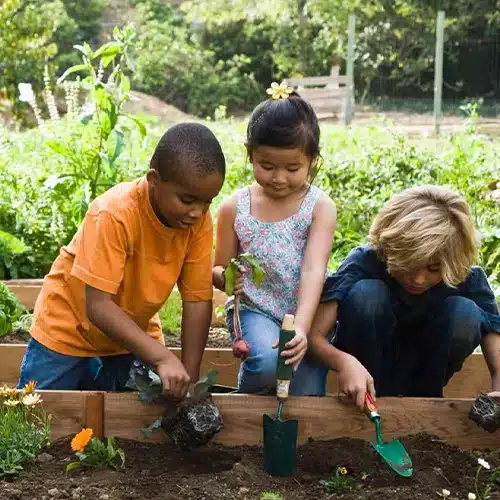
Garden Area: Encourage kids to plant flowers or vegetables, teaching them about nature and responsibility. A garden area can be educational and fun, giving children a sense of accomplishment as they grow their plants.
Sports Zone: Set up an area for sports like basketball, soccer, or even a mini-golf course. A sports zone can be a great way to encourage physical activity and develop various athletic skills.
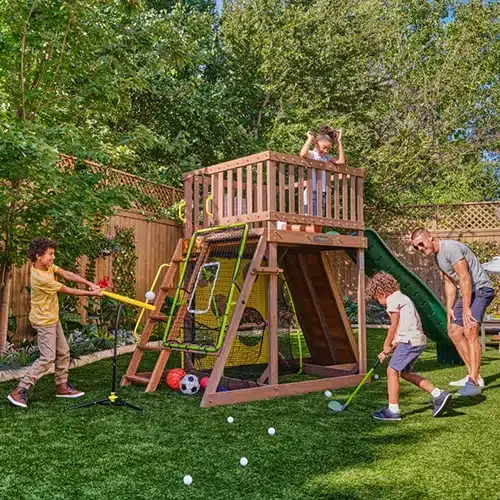
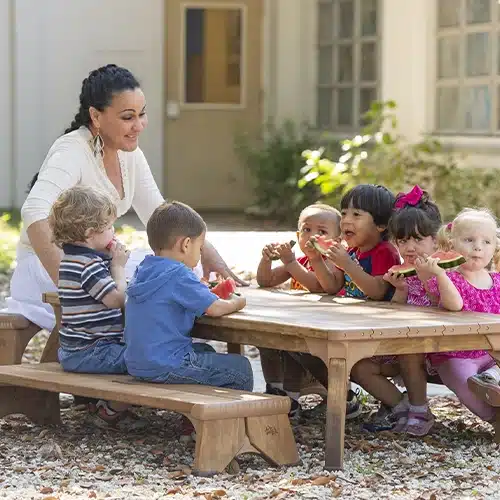
Picnic Area: Create a dedicated picnic spot with a table and benches for snacks and outdoor meals. This area can be used for family gatherings, birthday parties, and casual dining, making it a multifunctional part of your backyard.
Art Station: An outdoor art station with easels, chalkboards, and paint can inspire creativity. Providing a designated space for art can encourage children to express themselves and develop their artistic skills.
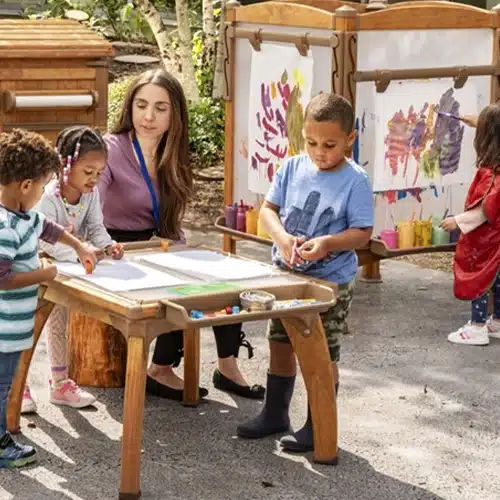
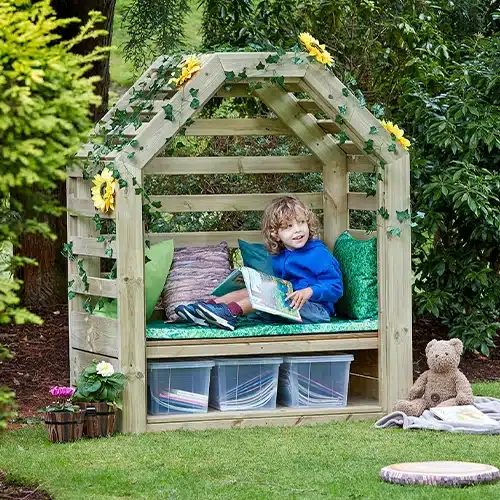
Quiet Nook: A shaded area with comfortable seating can be a perfect retreat for reading or resting. This quiet nook can be a calming space where kids and adults can unwind and enjoy the outdoors.
How can I ensure safety in my backyard playground?
Ensuring safety in your backyard playground involves selecting quality equipment, providing adequate supervision, and maintaining the play area regularly. Here are several ways to make your backyard playground a safe environment for children:
- Choose Certified Equipment: Always use playground equipment that meets safety standards and certifications. This ensures that the equipment has been tested for safety and durability. Look for reputable manufacturers that provide clear safety guidelines and product certifications.
- Regular Inspections: Inspect all playground equipment for wear and tear, loose bolts, or sharp edges. Address any issues immediately to prevent accidents. A well-maintained playground is crucial for preventing injuries.
- Soft Landing Surfaces: Use soft landing surfaces like rubber mulch, sand, or foam mats under climbing structures and swings. These materials help cushion falls and reduce the risk of injuries. Avoid hard surfaces like concrete or asphalt in play areas.
- Proper Installation: Ensure all playground equipment is installed correctly according to the manufacturer’s instructions. Improper installation can lead to instability and increase the risk of accidents. Hire a professional to install larger structures like swing sets or climbing walls if necessary.
- Adequate Supervision: Always supervise children while they are playing. Even with the safest equipment, accidents can happen. Keeping an eye on children helps to prevent risky behaviors and ensures quick response in case of an accident.
- Educate Children: Teach children how to use the playground equipment safely. Encourage them to take turns, avoid pushing or shoving, and use equipment as intended. Education is a critical component in ensuring playground safety.
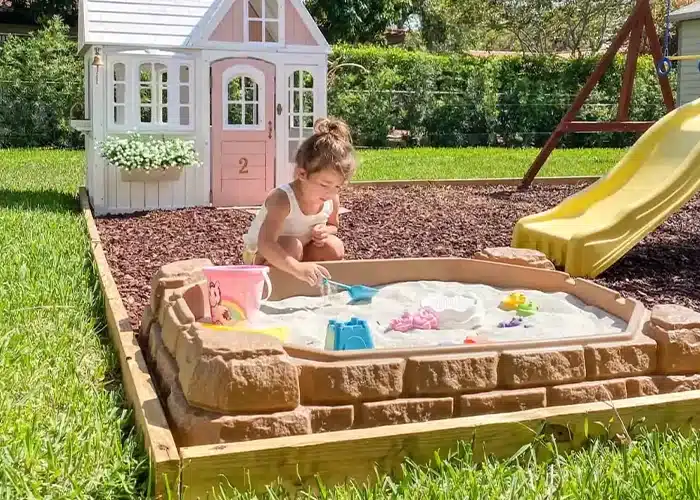
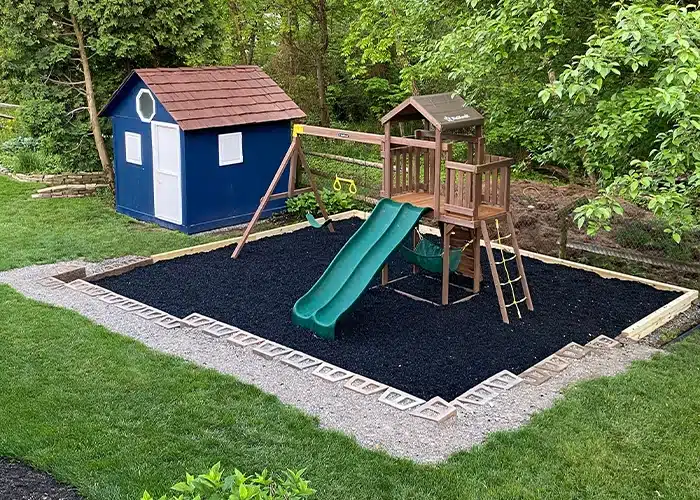
How can I make my backyard playground suitable for all ages?
Creating a backyard playground that caters to children of various ages requires thoughtful planning and multiple features. Here are some backyard playground ideas to ensure your space is engaging, safe, and fun for everyone.
First, consider diverse equipment that meets the needs of different age groups. For toddlers, include low-to-the-ground structures like small slides, sandboxes, and swings with safety harnesses. These features allow younger children to play safely and develop their motor skills. You can add more challenging elements for older kids, such as climbing walls, taller slides, and monkey bars. This variety ensures that children of all ages can find something enjoyable and age-appropriate.
Incorporating adjustable features is another compelling backyard playground idea. Equipment that can grow with your children, such as height-adjustable swings and scalable climbing walls, offers long-term value and continued interest. This adaptability means that as your children age, the playground can evolve to meet their changing needs and abilities, keeping them engaged and active.
Creating separate play areas within your backyard playground is an intelligent strategy to accommodate different age groups. Designate zones for toddlers, preschoolers, and older children to prevent conflicts and ensure safety. For example, a quiet corner with a sandbox and small playhouse for younger kids and a more dynamic area with climbing structures and sports equipment for older children. This separation helps maintain order and allows kids to play freely within their comfort zones.
Consider multi-functional spaces as part of your backyard playground ideas. These areas can serve multiple purposes and be enjoyed by children of various ages. An ample open space can be used for sports, running, or setting up temporary activities like obstacle courses. Similarly, a shaded picnic area can double as a craft station or reading nook, providing a versatile environment that adapts to different activities and interests.
Inclusive design is essential for making your backyard playground suitable for all ages and abilities. Ensure the playground is accessible by including ramps, wide pathways, and sensory play equipment. This consideration ensures that children with disabilities can enjoy the playground alongside their peers. Features like tactile boards, musical instruments, and water play areas add sensory-rich experiences that benefit all children.
Finally, incorporate engaging themes to captivate children’s imaginations and encourage creative play. Themes like pirate ships, castles, or jungle adventures can appeal to a wide age range and inspire hours of fun. Themed play areas provide a cohesive look and feel to your backyard playground, making it a magical place where kids of all ages can explore and play together.
By implementing these backyard playground ideas, you can create a versatile, engaging, and safe outdoor space that caters to children of all ages. The key is to mix age-appropriate equipment, adjustable features, and inclusive design to ensure every child finds joy and adventure in your backyard playground.
Types of Equipment
When selecting equipment for your backyard playground, it’s essential to consider age-appropriateness. Children of different ages have varying needs and abilities, and the equipment should reflect these differences to ensure safety and enjoyment for all.
Ages 2 to 5
For younger children, equipment should be safe, accessible, and engaging. A playground for this age group might include:
- Age-Appropriate Climbing Opportunities: Kids at this stage are developing their climbing skills, so climbing structures should be low to the ground and feature soft materials to prevent injuries.
- Shorter Slides: Slides are a favorite among young children. They should be shorter and less steep, allowing kids to enjoy them safely.
- Sensory Activities: Sensory play engages children’s senses and aids their development. Include sandboxes, water tables, or playground pieces with musical or tactile elements to stimulate sight, touch, and hearing.
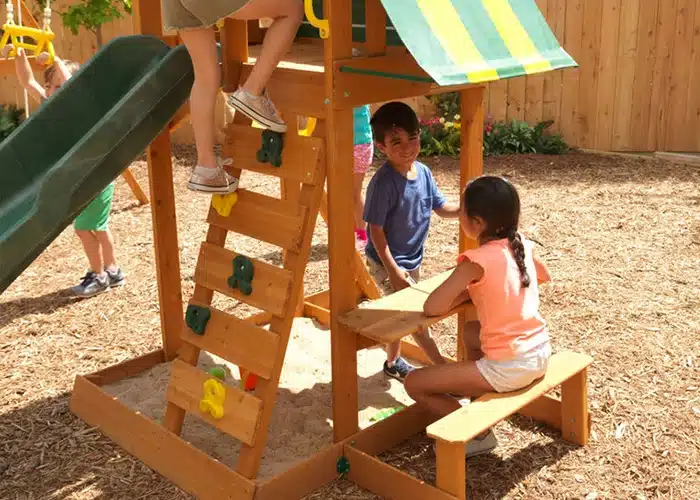
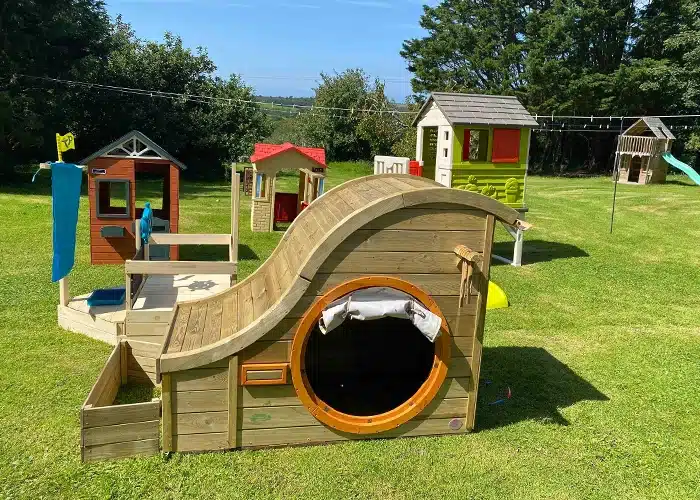
Ages 5 to 12
Older children require more challenging equipment for their advanced physical and cognitive development. Consider the following:
- Taller Equipment: Equipment should be larger and more complex to keep school-aged children engaged. Taller ladders, higher slides, and climbing walls can provide the physical challenges they enjoy.
- More Challenging Activities: Activities that test their growing skills are ideal. Monkey bars, balance beams, and obstacle courses are excellent for developing strength, coordination, and agility.
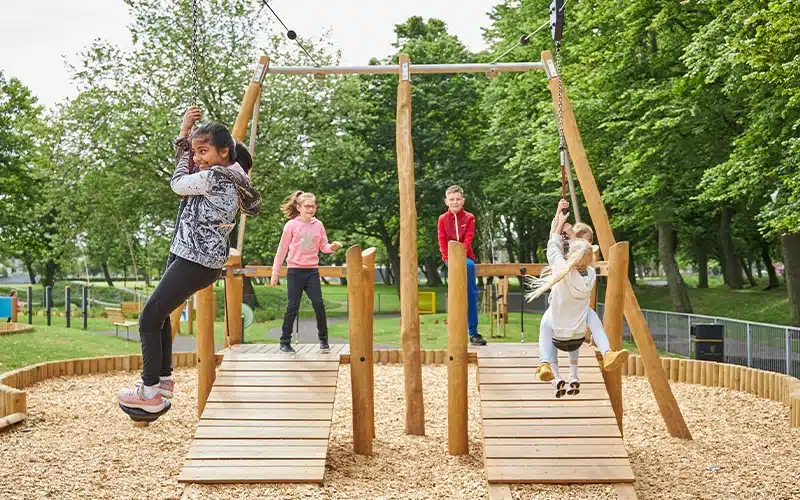
All Ages
To create a playground suitable for a wide range of ages, consider incorporating:
- Multi-Functional Structures: Playsets that combine elements like swings, slides, and climbing areas can simultaneously cater to different age groups.
- Adjustable Equipment: Choose equipment that can be adjusted as children grow, such as height-adjustable swings or scalable climbing walls.
- Inclusive Design: Ensure the playground is accessible to children of all abilities. Incorporate ramps, wide pathways, and equipment usable for children with disabilities.
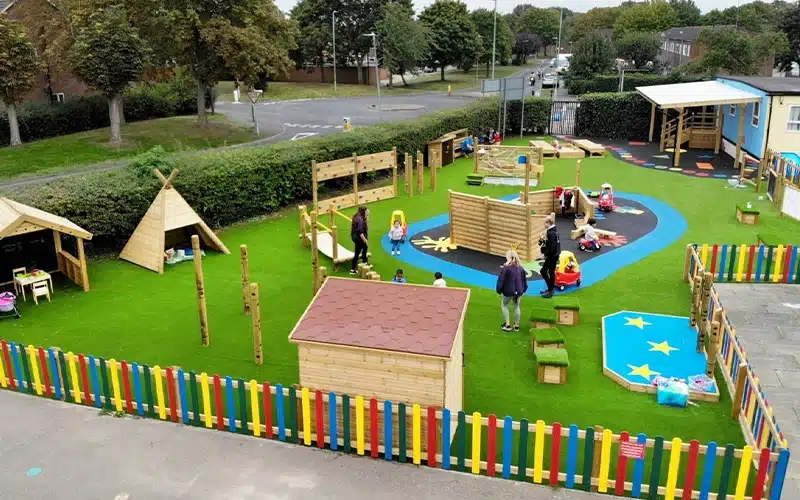
What Materials Are Best For Building a Backyard Playground?
Choosing suitable materials is crucial for building a durable, safe backyard playground. Here are some recommended materials and their benefits:
- Treated Wood: Treated wood is a popular playground choice due to its natural appearance and durability. It is resistant to decay and insects, making it suitable for outdoor use. However, ensure that the wood is treated with non-toxic preservatives to prevent harmful chemicals from leaching into the soil.
- High-Quality Plastic: Plastic materials are often used for slides, swing seats, and other components due to their durability and ease of maintenance. High-quality plastic is resistant to weathering and doesn’t splinter, making it a safe choice for children. Look for UV-resistant plastics to prevent fading and cracking.
- Metal: Metal is used for structural components like swing frames and climbing structures because of its strength and durability. Galvanized or powder-coated metal resists rust and corrosion, ensuring the longevity of the equipment. However, metal can become hot in direct sunlight, so consider shading or insulating exposed metal parts.
- Rubber: Rubber is commonly used for safety surfaces and impact-absorbing mats. Recycled rubber mulch and tiles provide excellent shock absorption and reduce the risk of injury from falls. Rubber surfaces are slip-resistant and easy to maintain, making them ideal for high-traffic play areas.
- Composite Materials: Composite materials, which combine wood fibers and plastic, offer the aesthetic appeal of wood with the durability and low maintenance of plastic. These materials are resistant to splintering, warping, and fading, making them an excellent choice for playground decking and other structural elements.
- Fabric and Netting: Fabric canopies and shade sails provide essential sun protection, keeping play areas cool and reducing the risk of sunburn. Heavy-duty netting is used for climbing nets and safety barriers, offering flexibility and strength. These materials add safety and comfort to the playground environment.
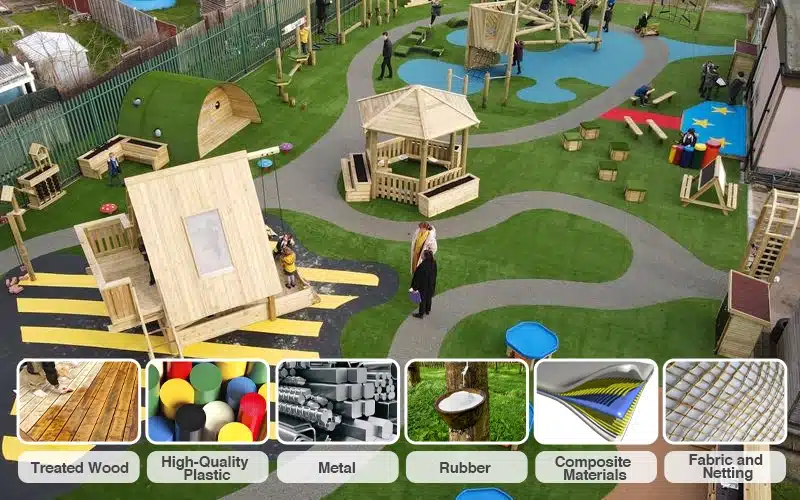
How Do I Incorporate Nature Into My Backyard Playground?
Incorporating natural elements into your backyard playground can enhance its aesthetic appeal and provide a more enriching play experience. Here are some ways to integrate nature into your playground design:
- Natural Landscaping: Use trees, shrubs, and flower beds to create a natural landscape around the playground. Planting native species provides shade, improves air quality, and provides local wildlife habitat. Ensure that the plants you choose are non-toxic and safe for children.
- Garden Areas: Dedicate a portion of the playground to a garden where children can plant flowers, vegetables, or herbs. Gardening teaches children about nature, responsibility, and where food comes from. Raised garden beds or container gardens are ideal for smaller spaces and are more accessible for children to manage.
- Natural Play Structures: Incorporate natural materials like logs, boulders, and tree stumps into the playground design. These elements can be climbing structures, balance beams, or seating areas. Natural play structures blend seamlessly with the environment and encourage imaginative play.
- Water Features: Adding a water feature like a small pond, stream, or water table can provide a sensory-rich play experience. Water play helps children develop fine motor skills and understand the properties of water. Ensure that any water feature is shallow and supervised to maintain safety.
- Sand Play Areas: Sandboxes or sand pits offer a versatile play space where children can dig, build, and explore. Sand play encourages creativity and sensory development. Cover the sandbox when not used to keep the sand clean and debris-free.
- Natural Pathways: Create pathways using natural materials like wood chips, gravel, or stepping stones. These paths can lead to different play areas and encourage exploration. Natural pathways add texture and visual interest to the playground.
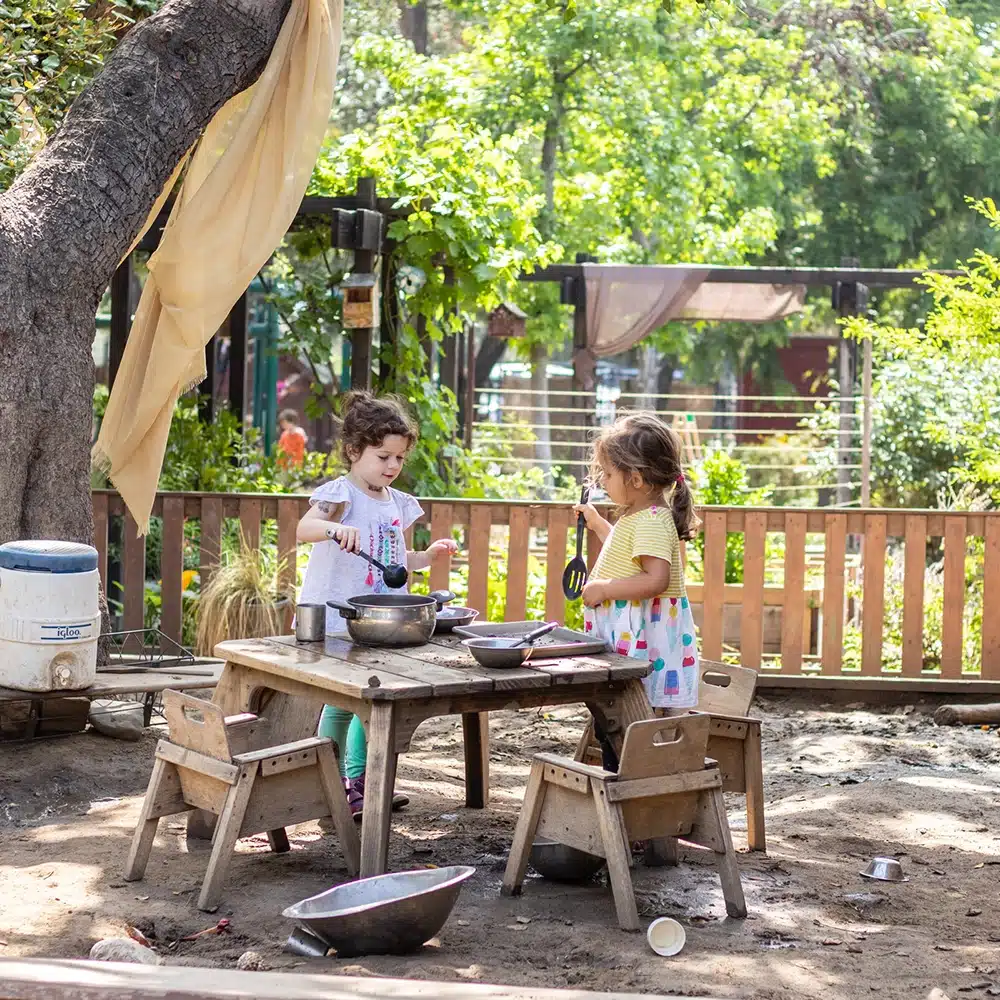
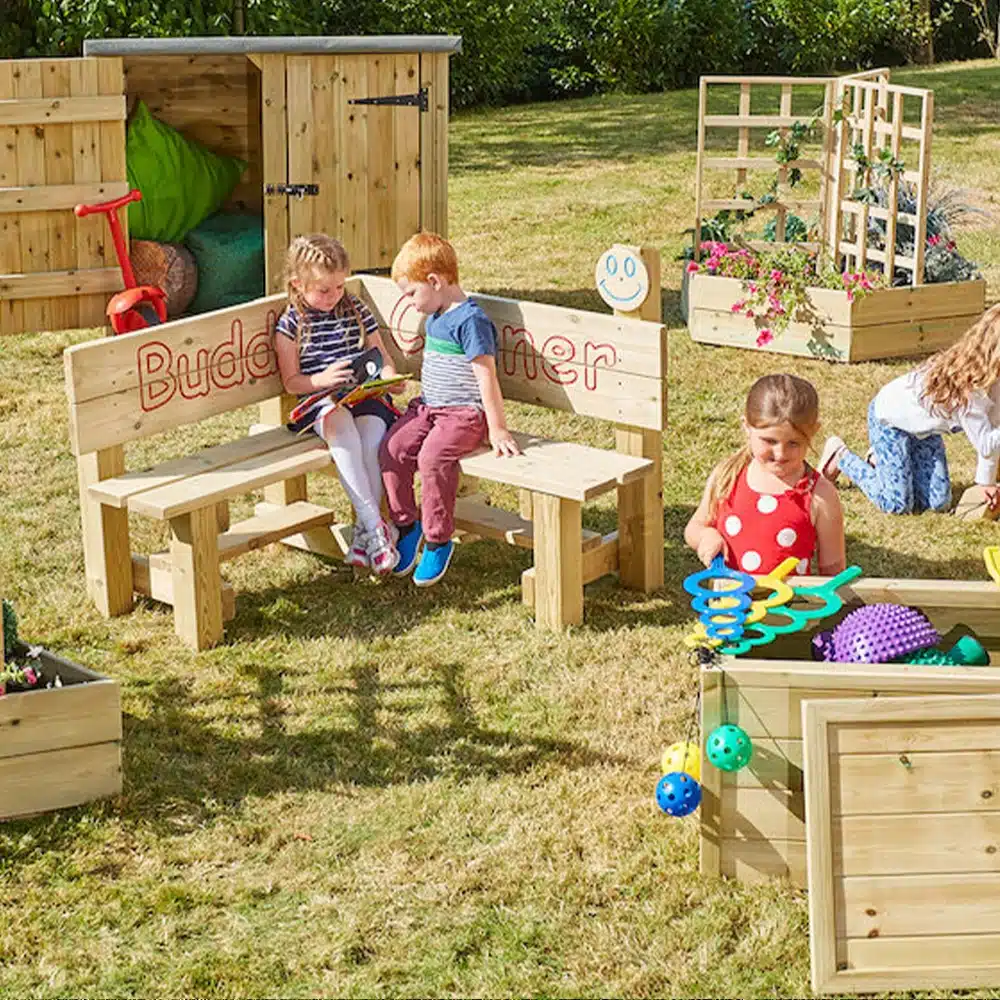
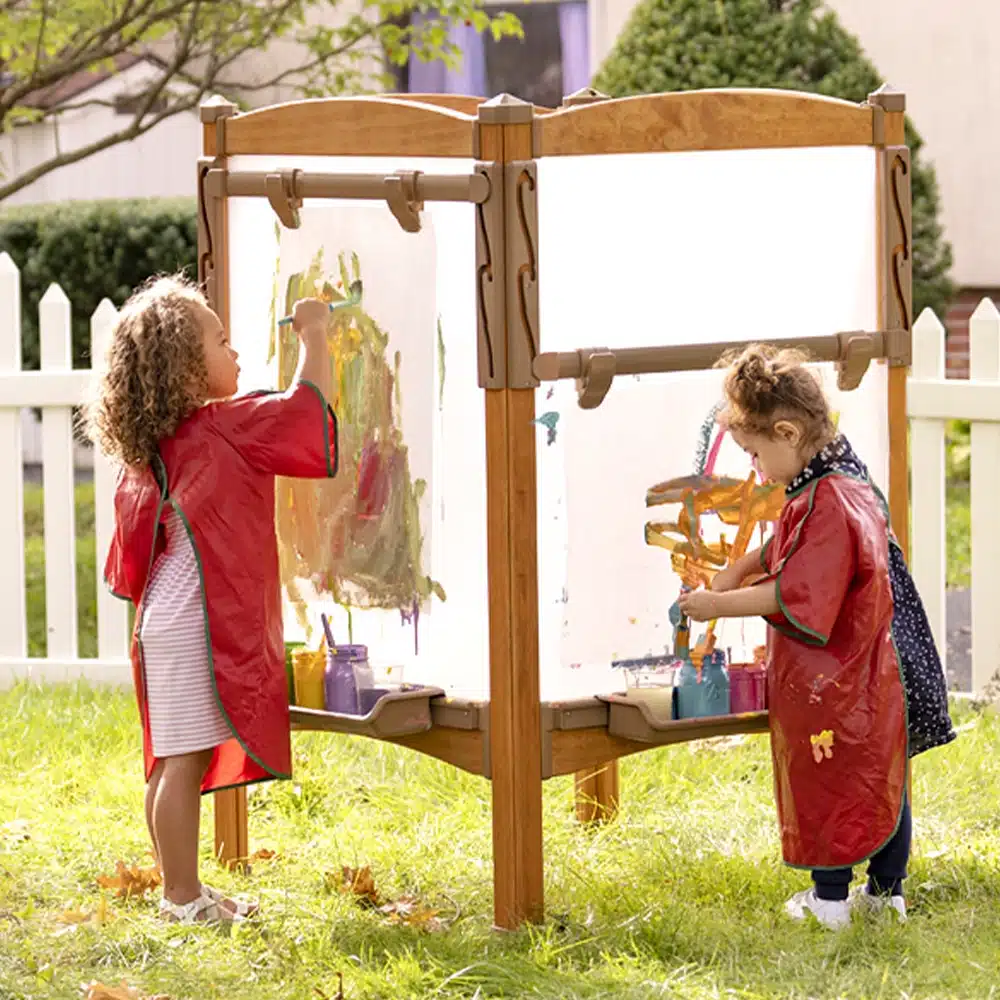
What Are The Best Ways To Incorporate Learning Activities into a Backyard Playground?
Incorporating learning activities into your backyard playground can enhance children’s cognitive and physical development. Here are some ideas to create an educational play environment:
- Outdoor Classroom: Set up an area with tables and seating where children can engage in educational activities like reading, writing, and art. This space can be used for structured lessons or free-form creative play, fostering a love for learning in an outdoor setting.
- Nature Exploration: Include elements encouraging children to explore and learn about nature. Install bird feeders, bug hotels, and butterfly gardens to attract wildlife. Provide magnifying glasses, binoculars, and field guides to help children observe and identify different species.
- Interactive Panels: Install educational panels and boards around the playground. These can include chalkboards for drawing and writing, weather stations to learn about the climate and sensory panels with different textures and sounds. Interactive panels make learning fun and accessible.
- Math and Science Games: Incorporate games and activities that teach math and science concepts. For example, a hopscotch grid can teach numbers and counting, while a sundial can demonstrate the movement of the sun and the idea of time. Use colorful and engaging designs to capture children’s interest.
- Musical Instruments: Outdoor musical instruments like drums, xylophones, and chimes can teach children about rhythm, pitch, and harmony. Music play encourages creativity and helps develop fine motor skills. Arrange the instruments in a musical garden for an immersive experience.
- Storytelling Areas: Create cozy nooks with benches or cushions where children can gather for storytelling sessions. Use natural elements like tree stumps or log seats to enhance the ambiance. Storytelling fosters language development and stimulates imagination.
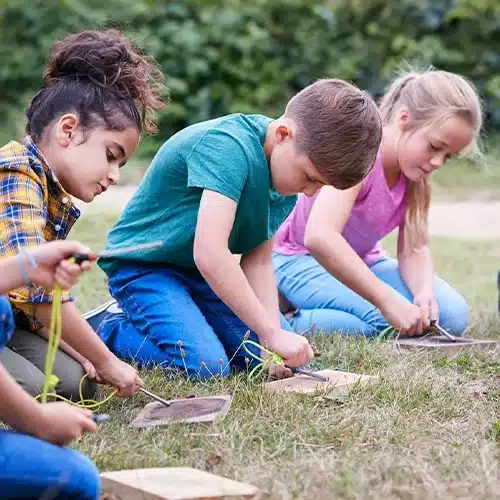
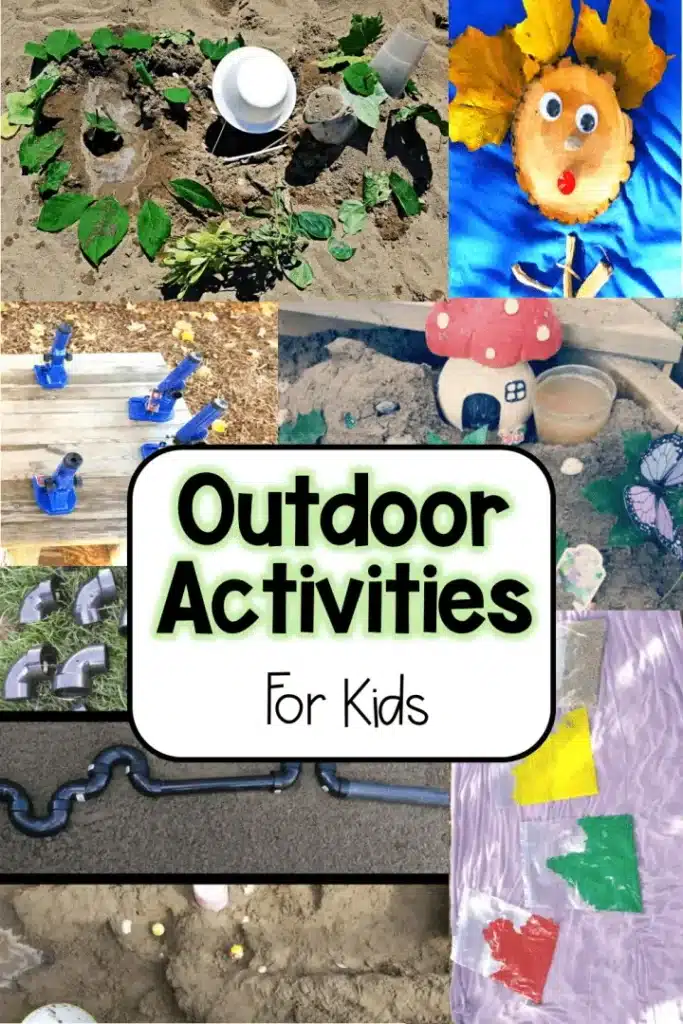
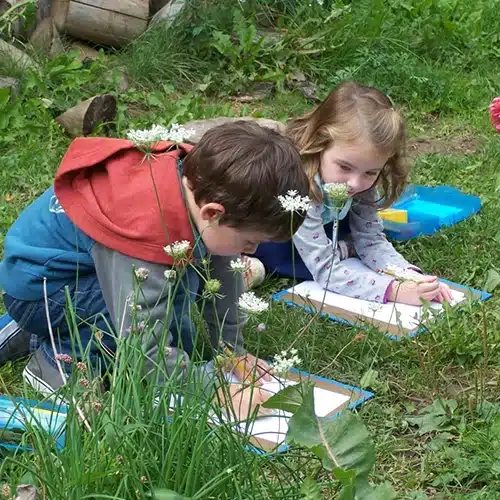
How to Select Equipment for Your Backyard Playground
Choosing the right equipment is crucial for creating a fun and safe playground. Here are some tips to help you make informed decisions:
- Assess Your Space: Measure your backyard to determine the available space. Consider the layout and existing structures to ensure ample room for children to play safely without overcrowding.
- Identify Age Groups: Think about the ages of the children who will be using the playground. Select equipment that is appropriate for their developmental stages. Younger children need safer, lower equipment, while older kids might prefer more challenging structures.
- Prioritize Safety: Look for equipment that meets safety standards and certifications. Check for rounded edges, non-toxic materials, and sturdy construction. Safety should always be the top priority when selecting playground equipment.
- Consider Versatility: Multi-functional equipment that offers various play options can maximize play value and space efficiency. For example, a playset with swings, slides, and climbing elements provides diverse activities in one structure.
- Focus on Quality: Invest in high-quality materials that can withstand outdoor conditions and heavy use. Durable materials like treated wood, metal, and high-quality plastic ensure the longevity and safety of the playground equipment. Quality products may have a higher upfront cost but save money on maintenance and replacements.
- Involve the Kids: Get input from the children who will use the playground. Ask them what activities they enjoy and what equipment they find exciting. Involving kids in decision-making ensures that the playground meets their interests and keeps them engaged.
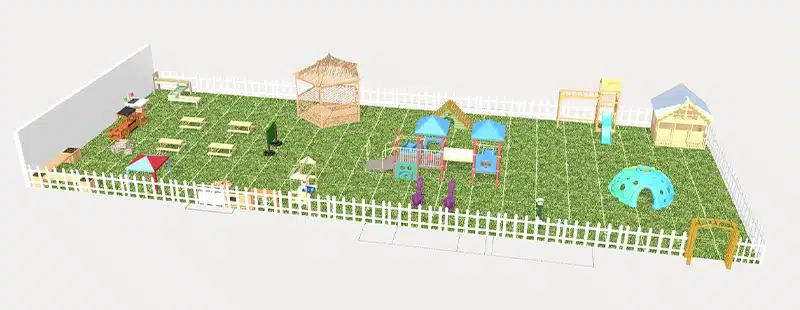
Creating a versatile and engaging backyard playground that caters to children of all ages is rewarding. Incorporating diverse equipment, adjustable features, and inclusive design ensures your outdoor space is a haven for fun and development. From toddler-friendly sandboxes to challenging climbing walls for older kids, there are countless ways to transform your backyard into a playground that grows with your children.
Ready to turn these backyard playground ideas into reality? Contact us today for customized playground solutions that meet your specific needs. Our team at Xiha Montessori is here to help you design and create the perfect play space for your children. Let’s build a backyard playground that inspires joy and adventure for years.
Send us your inquiry now, and let’s start planning your dream playground!

